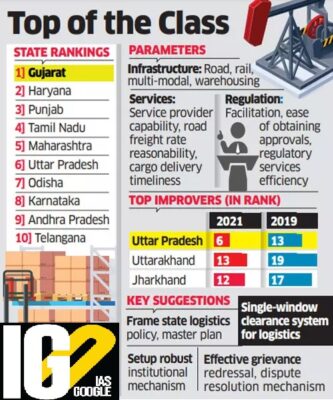- Home
- Prelims
- Mains
- Current Affairs
- Study Materials
- Test Series
 EDITORIALS & ARTICLES
EDITORIALS & ARTICLES
08th Nov 2021
GODDESS ANNAPURNA'S IDOL BROUGHT BACK FROM CANADA AFTER 108 YEARS, INSTALLED AT TEMPLE IN UP'S VARANASI
An ancient idol of Goddess Annapurna was recently brought back to the Kashi Vishwanath temple in Varanasi, Uttar Pradesh, from Canada.
Highlights:







- The idol was stolen from the temple and smuggled out of the country around 100 years ago.
- Annapurna is the 18th-century idol, carved in the Benares style.
- Annapurna is the goddess of food.
- Kashi Vishwanath Temple is located at the western bank of the holy river Ganges in Varanasi Uttar Pradesh.
- The Jyotirlinga present in the Kashi Vishwanath Temple is considered as the 12th of all the Jyotirlingas.
- Lord Shiva is the main deity in Hinduism and known as the Vishwanatha or Vishweshwara.
- According to the Shaiva philosophy, it is considered that the Temple is the midpoint of the worship for a long time.
- There are various small temples like the Kaalbhairav, Avimukteshwara, Vishnu, Vinayaka and Virupaksh Gauri in the main campus of the temple.
- The Archaeological Survey of India (ASI) comes under the Ministry of Culture.
- It was set up in 1861 with the primary object of surveying antiquarian remains in this country and their study.
- Aim: To “explore, excavate, conserve, preserve and protect the monuments and sites of National & International Importance.”
- Preservation, conservation and environmental development of centrally protected monuments and sites, including World Heritage Monuments and antiquities.
- Maintenance of gardens & development of new gardens surrounding centrally protected monuments and sites.
- Exploration and excavation of ancient sites.
- Specialized study of inscription and various phases of Indian architecture.
- Maintenance of Archaeological site Museums.
- Operation of the Antiquities and Art Treasures Act.

- Adi Shankara was an Indian philosopher and theologian whose works had a strong impact on the doctrine of Advaita Vedanta.
- Adi Shankara is said to have been born in Kaladi village on the bank of the Periyar, the largest river in Kerala.
- His parents, the Brahmin couple Siva Guru and Arya Antharjanam.
- He left home very early in search of learning and to become a sanyasin.
- He founded four monasteries, in Sringeri, Dwarka, Puri, and Joshimath which are believed to have helped in the historical development, revival and propagation of Advaita Vedanta.
- Adi Shankara is generally identified as the author of 116 works.
- Among them the celebrated commentaries (bhashyas) on 10 Upanishads, the Brahmasutra and the Gita, and poetic works including Vivekachudamani, Maneesha Panchakam, and Saundaryalahiri.
- It has also been claimed that Adi Shankara composed texts like Shankarasmrithi, which seeks to establish the social supremacy of Nambuthiri Brahmins.
- Advaita Vedanta articulates a philosophical position of radical nondualism, a revisionary worldview which it derives from the ancient Upanishadic texts.
- According to this, the Upanishads reveal a fundamental principle of nonduality termed ‘brahman’, which is the reality of all things.
- Advaitins understand brahman as transcending individuality and empirical plurality.
- They seek to establish that the essential core of one’s self is brahman.
- They believe Brahman is pure non-intentional consciousness.

- Launched: 2004
- It covers seven creative fields: Crafts and Folk Art, Design, Film, Gastronomy, Literature, Media Arts, and Music.
- Aim: to promote cooperation with and among cities that have identified creativity as a strategic factor for sustainable urban development.
- The Network further commits to supporting the United Nations frameworks, particularly the 2030 Agenda for Sustainable Development.
- Objective:
- Strengthen international cooperation between cities that have recognized creativity as a strategic factor of their sustainable development;
- Stimulate initiatives led by member cities to make creativity an essential component of urban development, notably through partnerships involving the public and private sectors and civil society.
- Strengthen the creation, distribution of cultural activities, goods and services;
- Develop hubs of creativity and innovation and broaden opportunities for creators and professionals in the cultural sector;
- Improve access to and participation in cultural life as well as the enjoyment of cultural goods and services, notably for marginalized or vulnerable groups and individuals;
- Fully integrate culture and creativity into local development strategies and plans.
- Sharing experiences, knowledge and best practices;
- Pilot projects, partnerships and initiatives associating the public and private sectors, and civil society; professional and artistic exchange programmes and networks;
- Studies, research and evaluations on the experience of the Creative Cities;
- Policies and measures for sustainable urban development;
- Communication and awareness raising activities.

- Launched: 2018
- Developed by: the Commerce and Industry Ministry.
- Aim: To promote goods trade.
- Objective: To encourage states for providing policy in order to improve their logistics-related infrastructure.
- LEADS is based on eight parameters:
- Infrastructure,
- Services,
- Timeliness,
- Track and trace,
- Competitiveness of pricing,
- Safety of cargo,
- Operating environment and
- Regulatory process.
- Gujarat, Haryana and Punjab were emerged as best performing states with respect to mobility of goods and efficiency of logistics chain.

- Petroleum and Agri-commodity prices move in tandem because of the bio-fuels link.
- When crude prices rise, blending ethanol from sugarcane and corn (maize) with petrol or diverting palm and soyabean oil for biodiesel production becomes much more attractive.
- Cotton, likewise, turns relatively affordable vis-à-vis petrochemicals-based synthetic fibres.
- Corn is primarily an animal feed, its diversion to ethanol leads to substitution by other grains, including wheat, for livestock use. That, then, pushes up prices of food grains as well.
- In case of sugar, mills step up the proportion of cane crushed for fermenting into alcohol.
- Apart from bio fuels, large price increases also tend to rub off on other farm produce through creation of positive sentiment.
- The positive sentiment is created by 2 factors:
- Receding pandemic cases and rising vaccination rates.
- The flood of liquidity unleashed by the us federal reserve and other global central banks.
- The positive sentiment is created by 2 factors:
- All this money, combined with the policy-induced ultra-low global interest rates, has found its way into stock markets, start-up investments and also commodities.
- And since restoration of supply chains hasn’t kept pace with the demand recovery, the overall result has been inflation.

- River frothing is one of the signs of the exceptionally high levels of pollution in the river.
- Dead and decaying parts of plants contain fats molecules that do not mix with water.
- They form an invisible floating layer on the water surface. When the water gets disturbed by waves, this fatty layer gets beaten into a froth.
- The foam made from organic matter in rivers and lakes can last for a long time.
- The high level of phosphates in the rivers is what causes such foam to build up.
- Phosphates are an ingredient used in many detergents which are designed to reduce the surface tension of water. These compounds make cleaning a lot easier.
- However, these phosphates persist in water, which leads to eutrophication.
- Eutrophication is a process by which a water body becomes enriched with minerals and nutrients, causing the growth of algae that in turn cuts off oxygen from mixing with the water and sunlight from reaching the depths of the water body.
- This lowers the oxygen content, killing off marine life that is essential to maintain the quality of water.
- These phosphates are responsible for the alarming amount of foam that forms on the surface of the river, similar to the foam created by detergents.









 Latest News
Latest News General Studies
General Studies